In a world that’s getting more and more digitally connected, many of us have become totally disconnected from the natural world we live in.
Many people spend hours stuck in an office staring at a computer, only to go home and spend their free time staring at a phone screen.
If you’re feeling stressed, lost, or craving a deeper connection to something more, spiritual travel could be exactly what you need.
Traveling around the world is a powerful way of awakening your spiritual side and connecting with the natural world – something that’s all but forgotten about in Western culture.
In this guide, we’ll show you the true importance of spiritual travel, how it can benefit you, and the top ten places you can think about visiting to experience a profound spiritual awakening.
The Importance of Travel for Self-Discovery
If you’re starting down the path of self-discovery, travel is a must. Without venturing beyond the boundaries of your normal environment, you’ll find it hard to expand your mind and discover a more profound appreciation of life.
Spiritual travel opens up opportunities for inner growth, mindfulness, a deeper connection with the world, and a much better understanding of different cultures.
If you’re unsure about spiritual travel, here are some incredible benefits you’ll get.
Personal growth and self-discovery
Immersing yourself in different cultures forces you to challenge your perspectives and beliefs. This is the fuel for personal growth and self-discovery and helps us discover more about ourselves.
It doesn’t matter if you’re planning solo travel or a shared experience with a group; you’ll still experience profound personal growth on your journey.
Connecting with nature
If you live in a city and rarely get a chance to connect with nature, spiritual travel will feel like a detox you didn’t know you needed. Exploring the outdoors and taking time to connect with nature have a deeply calming effect on the mind and spirit.
Spiritual travel, in particular, involves visiting religious sites and sacred spaces, giving an even more profound connection to nature and the world around you.
Exploring different traditions and cultures
Every culture you visit has its own unique ways of expressing spirituality and connecting with higher powers. Even if you don’t consider yourself to be a religious or spiritual person, experiencing these different traditions and practices helps expand your worldview and may even inspire you to incorporate different elements into your own spiritual practices.
Earth Connection on Your Travels

The importance of travel isn’t just based on spiritual evidence; there is plenty of scientific research that supports the importance of connecting with nature on your travels.
Taking time to deepen your connection with the natural world improves overall health, emotional well-being, and mental clarity.
We were never meant to spend hours every day staring at a computer screen, and research has shown that traveling and reconnecting with nature can be a powerful antidote to modern life.
“While on your travels, make connecting with the earth an integral part of your trip. Mindful walks, meditative practices, and being present during your travel are all easy but powerful ways to gain that earth connection and experience a spiritual awakening while you’re away.” – Sonia Madaan from Earth Eclipse
An earth connection isn’t just something we should think about on vacation; it should be a part of daily life. However, it’s much easier to immerse yourself in nature and spend purposeful time outdoors while on a spiritual retreat.
Appreciating the Beauty of the Natural World
Whether you’re practicing yoga in Rishikesh or visiting the Buddhist temple of Borobudur, it’s impossible not to appreciate the beauty of our natural world. You’ll be in awe of the size and magnificence of nature around us, and this can often cause a powerful shift in your perspective.
All of a sudden, the mundane problems of Western life seem so small, and you’ll feel connected to something much bigger than yourself. You’ll feel humbled yet deeply empowered knowing you are a part of millions of years of evolution, all created from cosmic stardust.
It’s easy to get caught up in the logistics of travel and forget to look up and take it all in. When you’re on a spiritual retreat, take the time to stop and think about the sheer size and grandiosity of the world around you, and you’ll start to feel the beginning of your own spiritual awakening.
Environmental Mindfulness in Travel

We’ve talked about the importance of travel on a personal level, but it’s also essential to think about our impact on the environment and how we can give back to the places we visit.
Sustainable travel (often known as eco-tourism or ethical travel) aims to minimize our footprint on the environment and have a positive impact on the places and cultures we visit.
Tourism can be devastating to the environment if not properly managed, so it’s our job to do all we can to reduce the negative effect of travel while on a spiritual journey.
Here are a few things you should do while on your trip to ensure you leave a positive impact.
Protect and conserve natural environments
When you’re visiting a remote location, aim to make as little impact as possible. This means:
- Take away all of your belongings and trash – don’t leave anything behind.
- Don’t remove stones or other items that could be sacred to the area.
- Don’t introduce anything new, such as bugs, plants, or food that wouldn’t otherwise be there.
- Don’t feed wild animals unless you’re with a trained guide who knows what they’re doing.
Take care of historical sites
Many spiritual travels involve visiting heritage sites and historical places – it’s a key reason why many people embark on these trips.
While you’re in a place of historical or cultural significance, do all you can to protect it. There are far too many instances of thoughtless vandalism and selfish individuals taking advantage of the sites; be the person who protects these places and respects the significance of the area.
Reduce your carbon footprint
Travel comes with a hefty carbon footprint, but there are ways you can counteract it to ensure you do as little damage as possible.
- Pay to offset the carbon emissions of your plane journey.
- Eat locally grown food.
- Plan how you will travel ahead of time.
- Spend your money locally to help boost local communities.
- Take part in conservation programs on your trips.
Try to stick to locally sourced foods
Traveling is a great opportunity to immerse yourself in different cultures and experience different ways of life. Wherever you are, try to eat locally sourced foods that support local farmers, fishermen, and businesses.
The Spiritual Side of Travel: Key Destinations
If you’re raring to go and want to find the best spiritual travel destinations, here are ten of the most incredible places you can visit around the world.
Rishikesh, India

Rishikesh is known as the Yoga Capital of the world. Millions of people flock to this quaint town at the foot of the Himalayan foothills every year.
Rishikesh is a yoga base camp for sadhus – holy men who live in ashrams on the banks of Hinduism’s most sacred river, the Ganga. They have mastered the art of meditation over the centuries and live a peaceful life with few possessions.
“The Ganga River is considered the holiest river because the Hindus believe it is the body of the Goddess Ganga, a deity who came to earth to purify souls. You can swim in the river, and many Hindus believe life isn’t complete without bathing in it at least once.” – Nick Kembel from Fun World Facts.
If you do decide to go to Rishikesh, you can stay in either Ram Jhula or Lakshman Jhula, both of which have plenty of affordable hotels and yoga centers. It’s a truly peaceful place with friendly locals, cheap food, and plenty to do.
If you’re looking for adventure on your spiritual retreat, you can go white water rafting, hike to waterfalls, and even cliff jumping. But if you want something calmer, you can find a yoga teacher and practice some quiet meditation instead.
Sedona, Arizona, USA
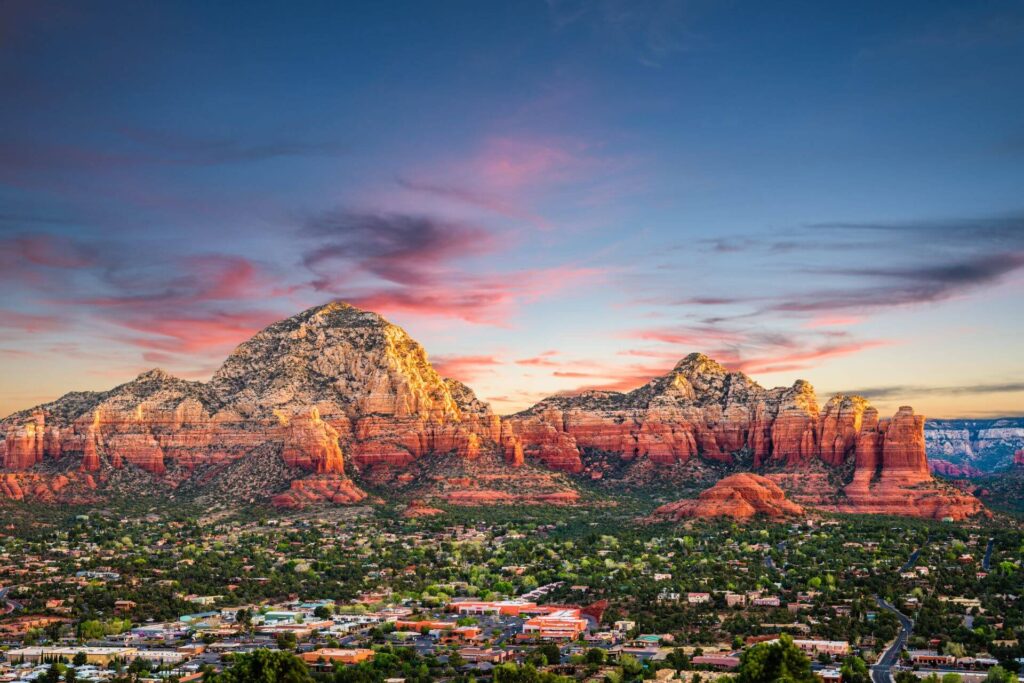
Sedona was once home to the Sinagua Indians and is believed to be the point where healing energy converges. For decades it has attracted spiritualists who believe they can feel that convergence of energy.
However, even if you don’t feel the convergence, there are dozens of holistic therapies and classes to help you on your spiritual quest. Some of the best hiking in the world is also found at Sedona, giving you an incredible opportunity to connect with nature in an awe-inspiring location.
Kyoto, Japan

From 794 to 1868, Kyoto was the capital of Japan. By the time it shifted to Tokyo, Kyoto was an established center of arts and Japanese culture.
The city is filled with lantern-lined streets, traditional teahouses, and around 2,000 Shinto shrines and Buddhist temples. You’ll also be able to see the iconic Golden Pavillion, a five-story wooden structure painted in glistening gold.
Borobudur Temple, Indonesia

Indonesia is expanding spiritual tourism to the Buddhist temple of Borobudur in the central Java Province. The Tidar Heritage Foundation has put together a cultural program that they hope will make the site as relevant for spiritual pilgrimage as Jerusalem or Rome.
Borobudur is the largest Buddhist temple in the world, built in the 8th and 9th centuries. It has three tiers, including a pyramidal base, cone-shaped middle, and a stupa at the top.
The temple is adorned with 2,672 relief panels and 504 statues of Buddha. It’s a breathtaking temple to see in person, and you get a real sense of the scale.
“Borobudur Temple serves as a Buddhist place of worship, and the artwork features the stories and teachings of Buddha. As one of the seven wonders of the world, it’s visited by millions of people every year and holds deep cultural significance.” – Mal Hellyer from Raw Mal Roams
Camino de Santiago, Spain
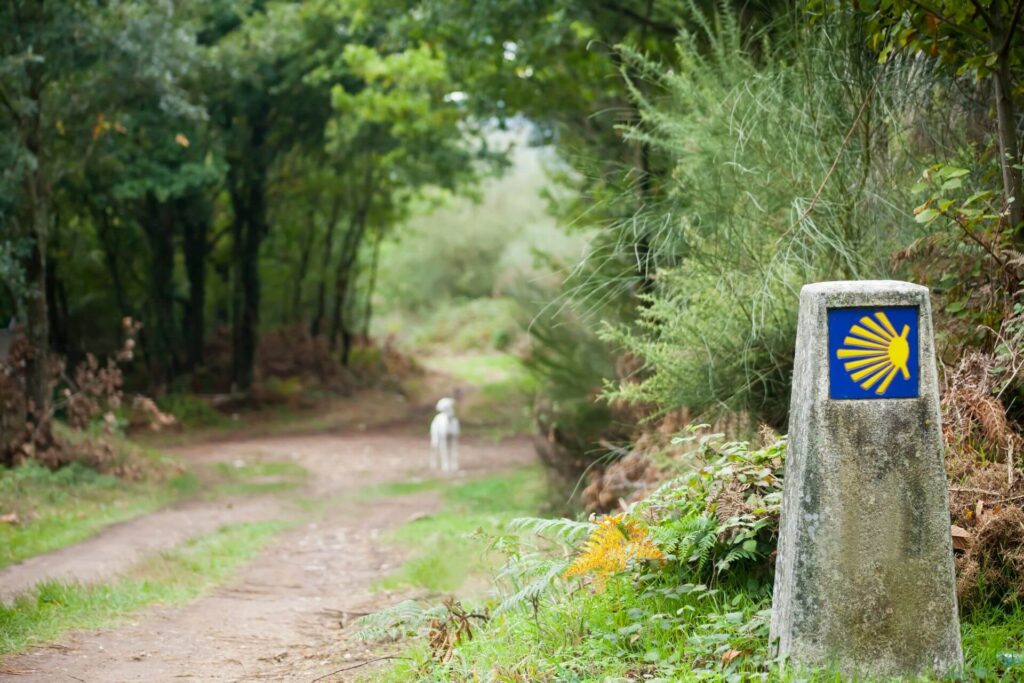
The Camino de Santiago is an ancient tradition in which pilgrims would walk from their homes all the way to the Santiago Cathedral. There, the remains of St. James are kept, the person responsible for bringing Christianity to Spain.
Thousands of people still take the walk every year in honor of St. James, all of which start at different points throughout Spain. Camino Frances is the most popular route, beginning in the small town of St. Jean-Pied-De-Port.
You don’t have to walk the Camino in one long go since it takes around five weeks. At around 500 miles long, many pilgrims do the route in stages. But if you do plan on visiting, plan to start at the official point at St. Jean-Pied-De-Port with the rest of the pilgrims. It’s a wonderful experience to be part of.
Machu Picchu, Peru
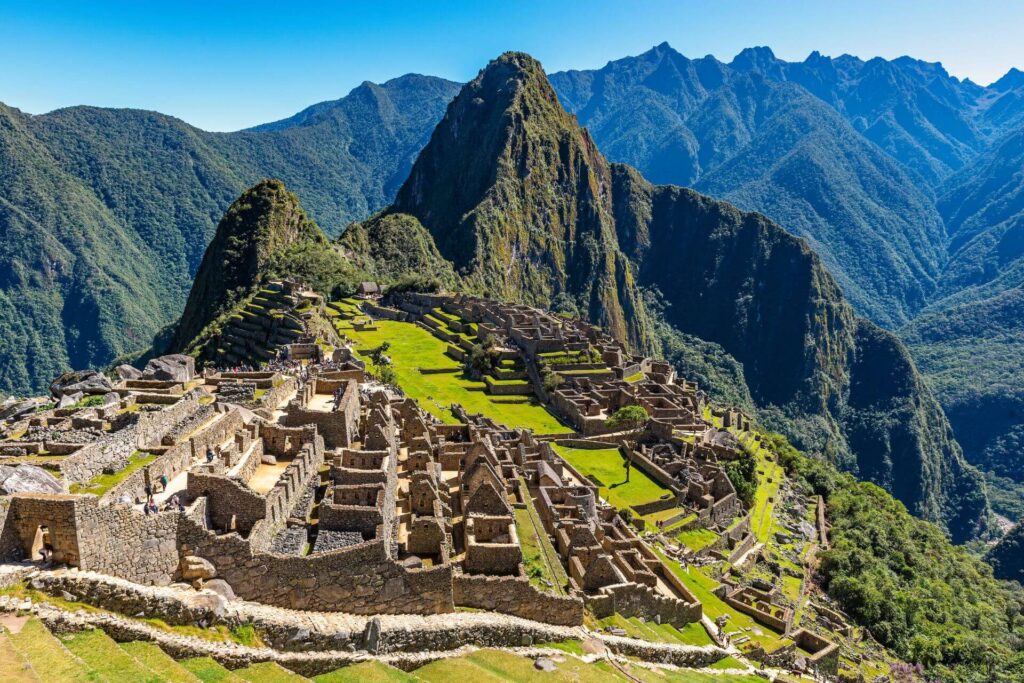
No list of spiritual destinations would be complete without mentioning Machu Picchu. It’s still shrouded in mystery today, and much of the site has been reclaimed by the jungle. Archaeologists still haven’t concluded what the site was used for, but it’s thought to be an estate for the Inca emperor or a sacred religious site reserved for nobility.
Sat between two Andean peaks nearly 8,000 feet above sea level, the walk to and around the ruins is profound. From the Temple of the Sun to the ritual stone of Intihuatana, you will experience a deep spiritual awakening in this sacred place.
If you can, take the hike to the Sun Gate for the most incredible panoramic view of the entire site. It’s a great spot for quiet contemplation and connecting with nature.
Samoa
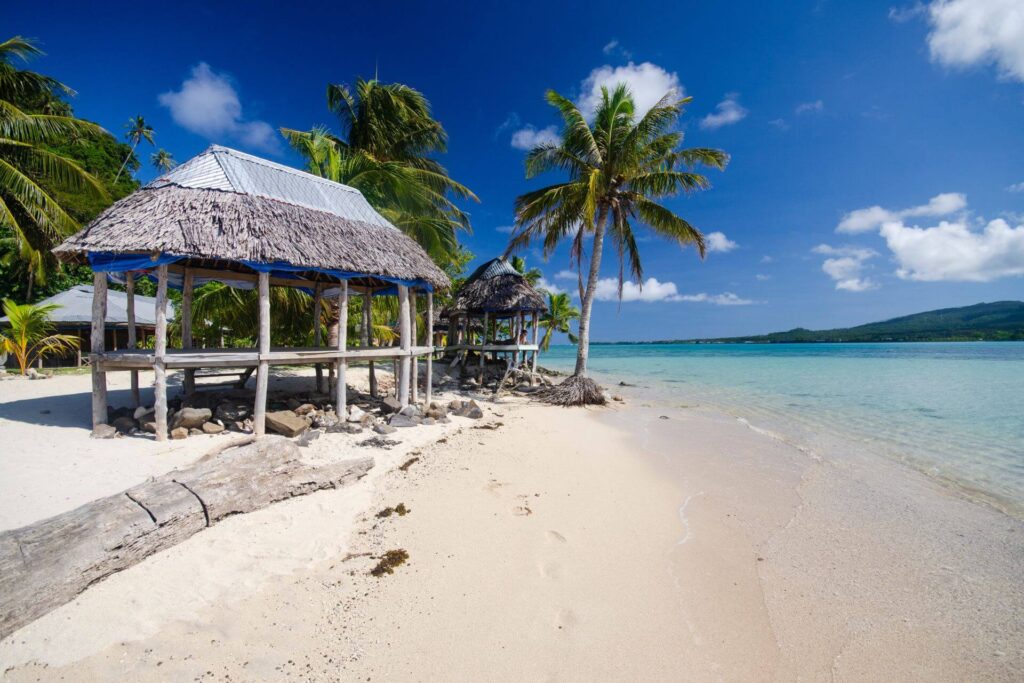
The Samoan culture has a Polynesian heritage and is heavily focused on family and the church. With a strong sense of community, a Samoan person’s tribe is the number one priority.
When visiting Samoa, you’ll get a strong sense of the pride the locals have for their heritage, traditions, and church. They are incredibly welcoming and generous and will do all they can to make visitors feel at home.
“The tattoos are an important part of the Samoan culture. The Tatau is a symbol of status and a rite of passage for adolescence stepping into adulthood. They’re done with wooden tools, not a tattoo gun, so they’re incredibly painful to endure. But every Samoan person I’ve met is incredibly proud of their Tatau – the most honorable being the Pe’a for men or Malu for women.” – Victoria Hudgins from Tattoo Glee
Jerusalem, Israel

There are three distinct districts in Jerusalem. The Old City is home to the holy sites of Judaism, Christianity, and Islam. During the day, the markets are bustling with traders selling all kinds of goods, separated into Jewish, Muslim, Christian, and Armenian quarters.
The New City is mostly Jewish, containing centuries-old buildings and traditions that will leave you in awe.
Take time to visit the different districts to get a sense of the different cultures all thriving in Jerusalem. The Temple Mount, Western Wall, and Church of the Holy Sepulchre are all important sites to visit on a spiritual journey here.
Uluru, Australia
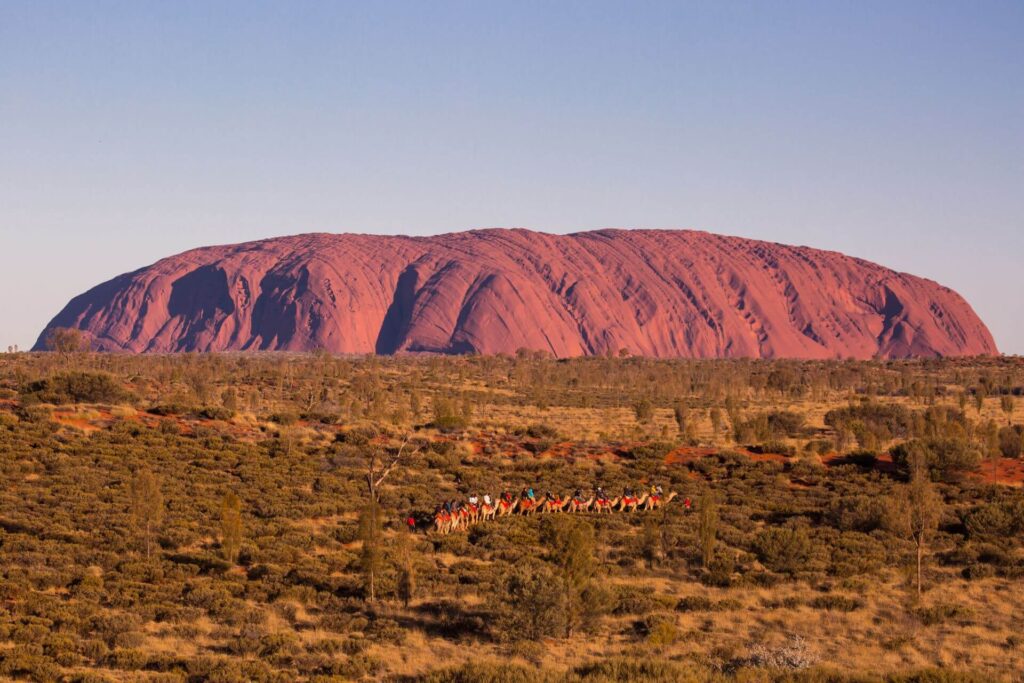
Deep in the Outback, the arid plains of central Australia are known as the Red Center. Here, in this remote location is home to one of the oldest civilizations on earth. The Aboriginal people are the spiritual caretakers of Uluru (or Ayers Rock as it’s more commonly known).
This natural phenomenon is a 1,142-foot-high sandstone monolith with cave walls adorned with Aboriginal art depicting kangaroos, turtles, frogs, and the seasons.
Uluru is the centerpiece of Uluru-Kata Tjuta National Park and is a wonderful site to visit. On a three-day visit, you’ll be able to watch the sunrise over the vast landscape, learn about the Anangu culture, and visit the cultural center for an introduction to Aboriginal art.
The guided tours of Ayres Rock run year-round. The 3.5-hour base walk lets you get as close to the rock as possible, and this is where many people experience a profound spiritual shift.
Varanasi, India

Last but not least on our list of the world’s most incredible spiritual destinations is Varanasi in India. Settled over 4,000 years ago, Varanasi is thought to be the world’s oldest city.
The spiritual heart of India, Varanasi is a hub of Hindu devotion and spirituality. Pilgrims come to bathe in the Ganges, offer prayers, and even cremate their dead.
Buddhists believe this is where Buddha gave his first sermon, so it’s also a powerful place for the Buddhist religion.
As a visitor, it’s incredible to witness the aarti ceremony at night, where the sadhus show their devotion by lifting flaming lamps and swinging incense in a powerful ritual.
Where Will Your Spiritual Journey Take You?
There are some deeply spiritual places all over the world where people go to experience a spiritual awakening. But you don’t need to travel thousands of miles to begin your spiritual journey.
No matter where you are in the world, you can take time to sit and connect with nature, practice meditation, and learn about the spiritual practices of different cultures.

